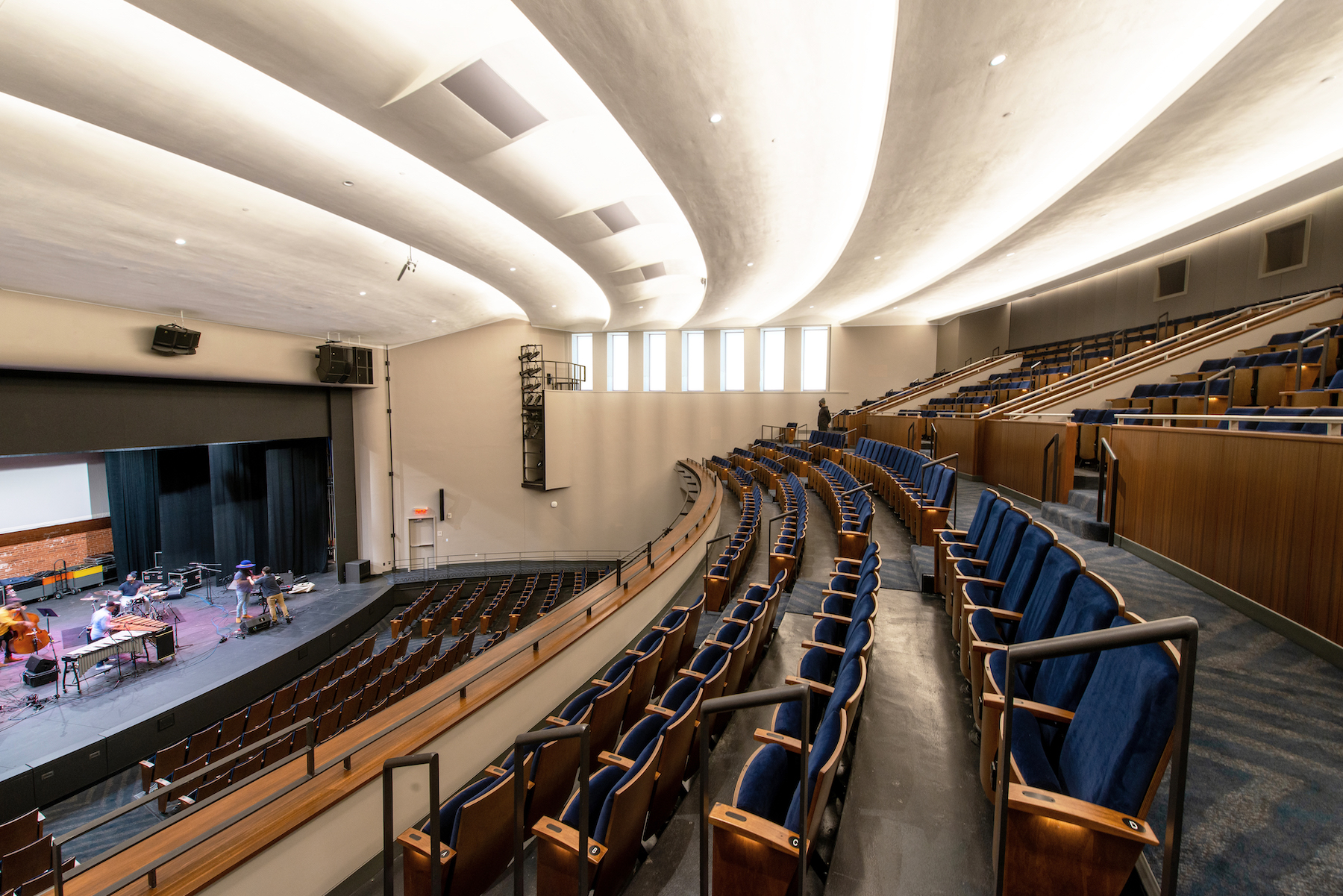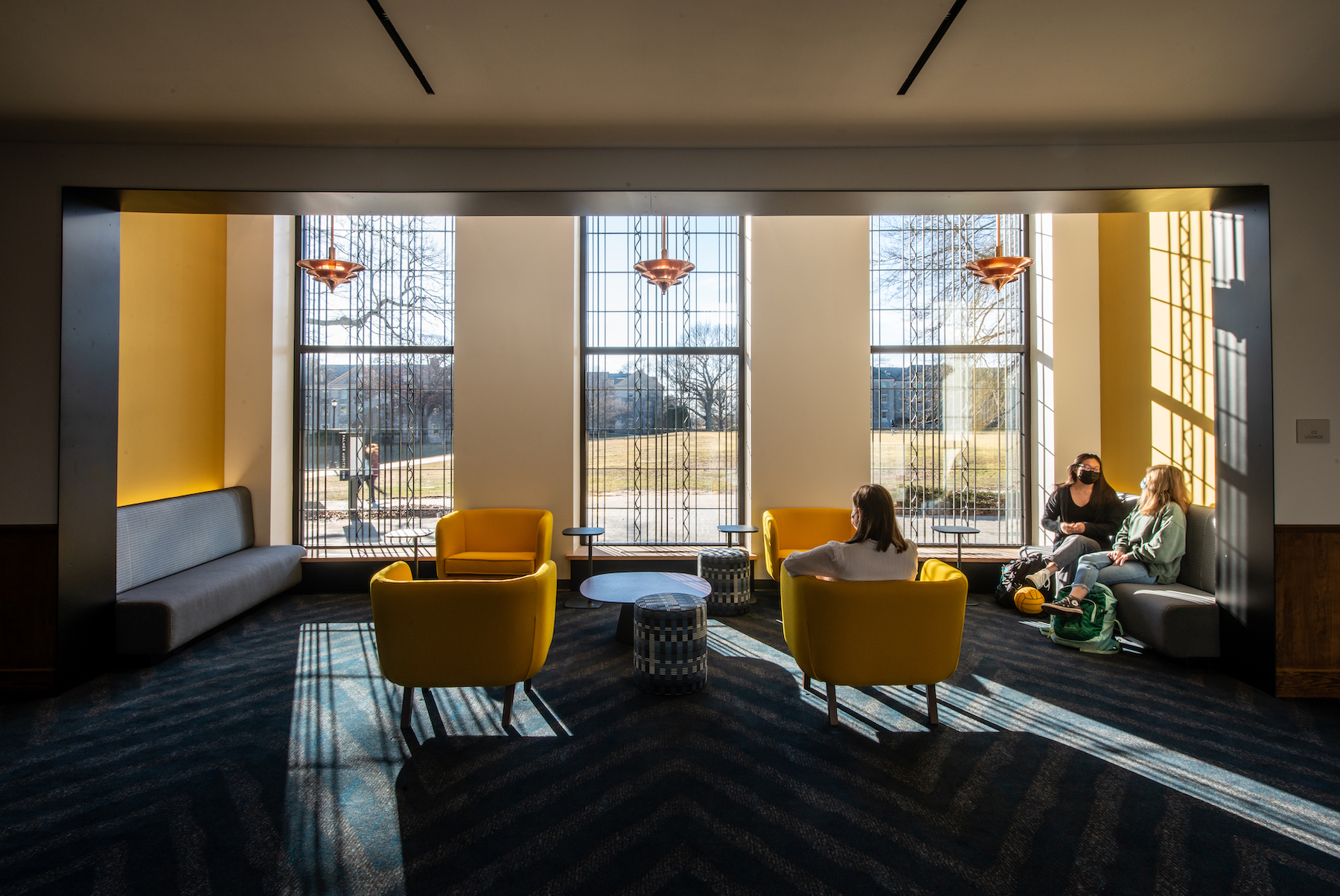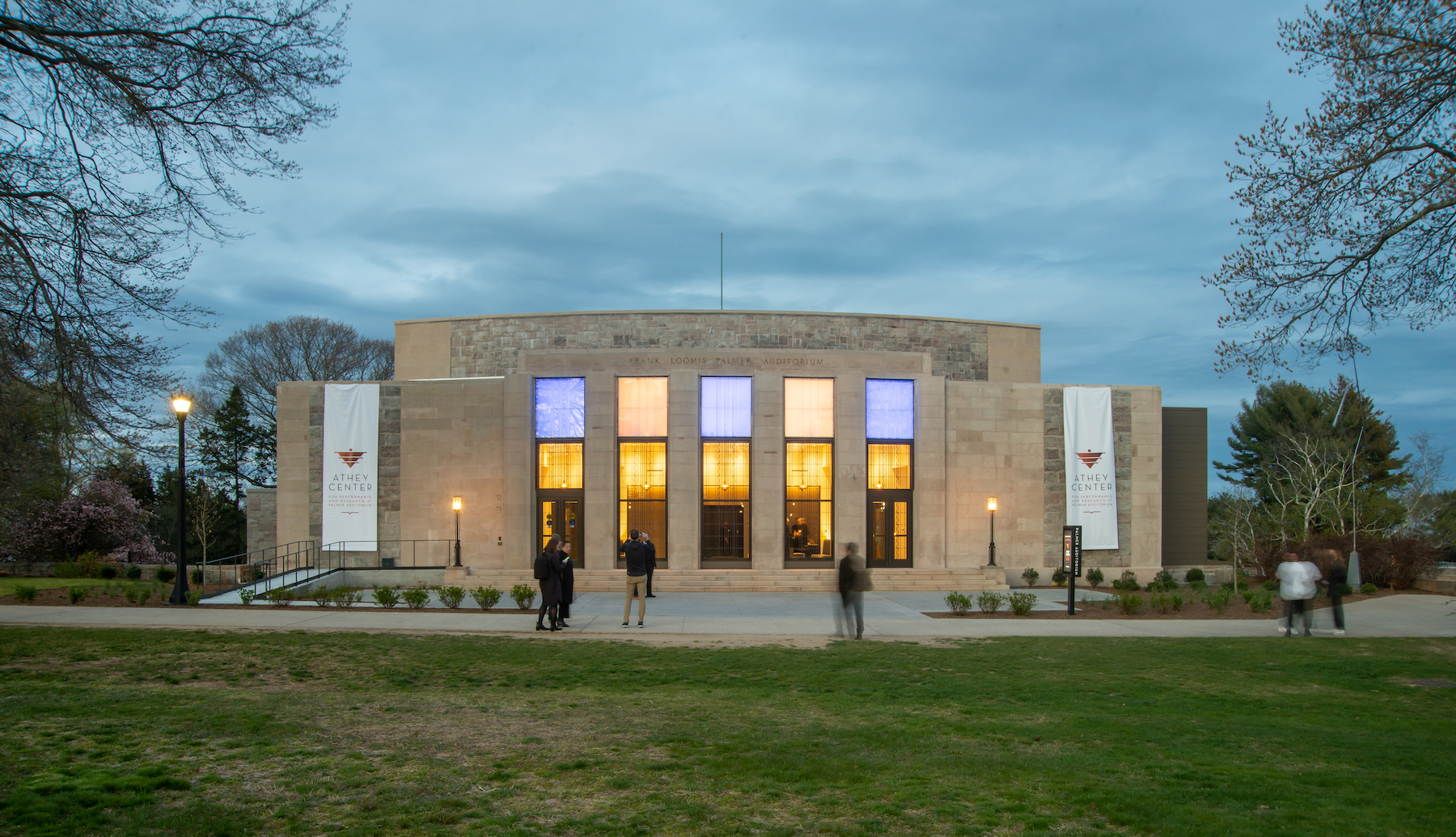Palmer Auditorium, on the campus of Connecticut College in New London, is an Art Deco theater designed by William F. Lamb in 1939, who also designed the Empire State Building in New York City. The theater has a long history of hosting acclaimed artists, musicians, and performers, from Dizzy Gillespie to Yo-Yo Ma.
This spring, the 38,500-sf building entered a new era, thanks to its new name—the Athey Center for Performance and Research at Palmer Auditorium—and a $23 million renovation by a team that included the architecture firm Ennead Architects, which modernized the facility to support teaching, learning and performance across a spectrum of disciplines.
The project dates back to 2018 and took 24 months of construction. It was completed in April, and included a new entrance, façade renewal, and interior renovation to the auditorium, lobbies, lounges, costume and workshop, as well as the teaching, administrative, and support spaces.
“A lot of things needed improvement,” says Brian Masuda, Associate Principal with Ennead Architects, whom BD+C interviewed with Molly McGowan, a Partner at the firm. Prior to the renovation, clerestories in the auditorium had been boarded up, and the building, says Masuda, “was very dark, and kind of shut off from the rest of the campus.” So it was imperative to bring more natural light into the building, including onto its historic wood stairs that were preserved and restored.

The renovation opened up three sides of the building with glass door fronts and feature walls. On the building’s historic side, the team replaced deteriorating spandrels with lightboxes made with cast glass. And where appropriate, transparent materials were used. Inside, the lobby window looks down onto the studio. And the theater department, which had been scattered throughout the building, was consolidated within one wing.
McGowan says the renovation “recognizes the history of the building” while, at the same time, making what is now part of the college’s Theater Department more modern. The challenge, says Masuda, was blending the old and the new, from rehanging the lobby’s lighting pendants to adding modern furniture and new carpeting with an Art Deco-like chevron pattern.
SUBTLE RENOVATION ADDITIONS

About 500 usable square footage were added to the building during the renovation. By making small adjustments to the building plans within the existing footprint, Ennead created a new lounge area and box office with an expanded public lobby. The lobby spaces on two levels were re-imagined to serve as informal teaching and study spaces. Two key elements were introduced at the main level lobby: a highly visible entry to the Theater Department’s administrative suite and a visual connection to the newly created teaching studio.
The auditorium seating now provides access that complies with the Americans with Disabilities Act, as well as improved sight lines, better acoustics, a new state, and visual technology upgrades.
“The renovations have resulted in a magnificent transformation that promises to make the Athey Center a destination for the region and an inspiration for future generations of student performers ready to make a difference with their art,” said Connecticut College’s president Katherine Bergeron.
The Building Team on this project included A/Z Corp (GC), Altieri (ME), Silman (SE), and Next Stage (theatrical consultant).
Related Stories
| Jun 12, 2014
Austrian university develops 'inflatable' concrete dome method
Constructing a concrete dome is a costly process, but this may change soon. A team from the Vienna University of Technology has developed a method that allows concrete domes to form with the use of air and steel cables instead of expensive, timber supporting structures.
| Jun 9, 2014
Green Building Initiative launches Green Globes for Sustainable Interiors program
The new program focuses exclusively on the sustainable design and construction of interior spaces in nonresidential buildings and can be pursued by both building owners and individual lessees of commercial spaces.
| May 29, 2014
7 cost-effective ways to make U.S. infrastructure more resilient
Moving critical elements to higher ground and designing for longer lifespans are just some of the ways cities and governments can make infrastructure more resilient to natural disasters and climate change, writes Richard Cavallaro, President of Skanska USA Civil.
| May 20, 2014
Kinetic Architecture: New book explores innovations in active façades
The book, co-authored by Arup's Russell Fortmeyer, illustrates the various ways architects, consultants, and engineers approach energy and comfort by manipulating air, water, and light through the layers of passive and active building envelope systems.
| May 19, 2014
What can architects learn from nature’s 3.8 billion years of experience?
In a new report, HOK and Biomimicry 3.8 partnered to study how lessons from the temperate broadleaf forest biome, which houses many of the world’s largest population centers, can inform the design of the built environment.
| May 13, 2014
19 industry groups team to promote resilient planning and building materials
The industry associations, with more than 700,000 members generating almost $1 trillion in GDP, have issued a joint statement on resilience, pushing design and building solutions for disaster mitigation.
| May 11, 2014
Final call for entries: 2014 Giants 300 survey
BD+C's 2014 Giants 300 survey forms are due Wednesday, May 21. Survey results will be published in our July 2014 issue. The annual Giants 300 Report ranks the top AEC firms in commercial construction, by revenue.
| May 2, 2014
World's largest outdoor chandelier tops reworked streetscape for Cleveland's PlayhouseSquare
Streetscape project includes monumental gateway portals, LED signage, and a new plaza, fire pit, sidewalk café, and alfresco dining area.
| Apr 29, 2014
USGBC launches real-time green building data dashboard
The online data visualization resource highlights green building data for each state and Washington, D.C.
| Apr 16, 2014
Upgrading windows: repair, refurbish, or retrofit [AIA course]
Building Teams must focus on a number of key decisions in order to arrive at the optimal solution: repair the windows in place, remove and refurbish them, or opt for full replacement.
















